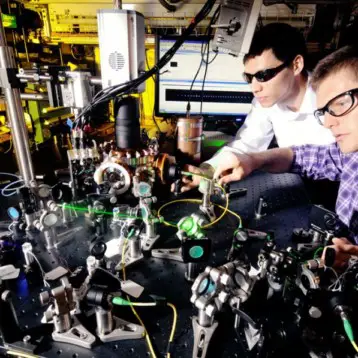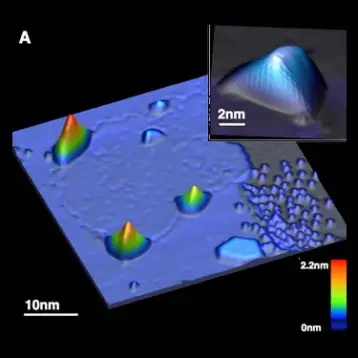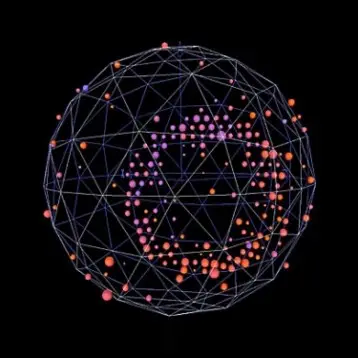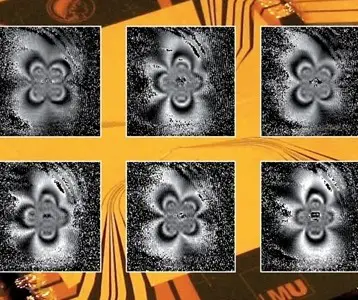|
Quantum bits are created using a semiconductor nanostructure called a quantum dot. These unstable bits are formed through arrays of quantum dots, each containing a single extra electron, which are sensitive to magnetic field fluctuations emanating from the atom nuclei of the quantum dot. The effect of the magnetic field disturbs the states that the quantum bit stores causing information to be lost.
“In our approach, the quantum bit for information storage is an electron spin confined to a single dot in a semiconductor like indium arsenide. Rather than representing a 0 or a 1 as a transistor does in a classical computer, a quantum bit can be a linear combination of 0 and 1. It’s sort of like hitting two piano keys at the same time,” said Duncan Steel, a professor in the Department of Physics and the Robert J. Hiller Professor of Electrical Engineering and Computer Science.
The unique feature of quantum computers is their capability to correspond to multiple states concurrently. For example quantum computers can be applied in factoring numbers much faster than conventional computers. However, if there are external factors affecting the phase of any one electron spin, the information contained in the bit would be lost. An electron spin is the intrinsic property of an electron and not the rotation of the electron, as would be thought.
|
The researchers at Michigan employed lasers to excite the quantum dot and in the process were successful in blocking the interference caused by magnetic fields on quantum dots. The energy from the laser energizes the electron to jump to a higher energy level. This jump leaves a charged hole in the electron cloud, which creates a magnetic field due to the combined spin of the remaining electron cloud. The findings show that that the vacant electron hole works directly with the nuclei and contains its magnetic field.
“This discovery was quite unexpected,” Steel said. “Naturally occurring, nonlinear feedback in physical systems is rarely observed. We found a remarkable piece of physics in nature. We still have other major technical obstacles, but our work shows that one of the major hurdles to quantum computers that we thought might be a show-stopper isn’t one,” he added.
TFOT has previously written about how an international team of researchers manipulated the quantum state of a single electron in a silicon transistor by placing the electron in two places at once. Another team has created single atom quantum dots, able to control individual electrons. You can also check out our article on electron traps that compute through superimposed quantum dots.
Additional information on the research can be obtained at University of Michigan’s website.












